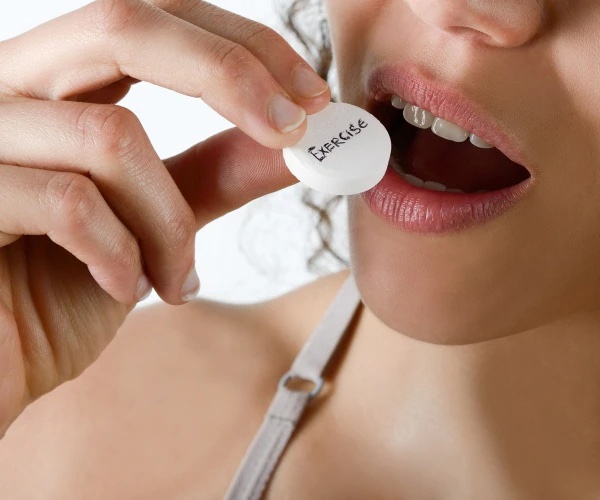Experimental Pill Mimics Effects of Exercise

Dreamstime
By Lynn C. Allison From Newsmax
Scientists from Washington University School of Medicine in St. Louis announced that they are close to creating a pill that mimics the physical and mental health benefits of exercise. This could be a huge bonus for people who are unable to engage in physical activity due to aging, illness, or disability.
“We cannot replace exercise; exercise is important on all levels,” said Bahaa Elgendy, the project’s principal investigator in a news release. “If I can exercise, I should go ahead and get the physical activity. But there are so many cases in which a substitute is needed.”
Elgendy, a professor of anesthesiology, and his colleagues are hoping to develop a drug that mimics exercise’s ability to enhance muscle cells’ metabolism and growth, along with improved muscle performance. Such a drug could offset the muscle atrophy and weakness that occur with age or are affected by cancer, genetic conditions, or other reasons individuals are unable to exercise. It may also counter the effects of weight-loss drugs that trigger both weight and muscle loss.
After a decade of work, the Washington University team identified estrogen-related receptors, or ERRs, that cause the metabolic changes associated with exercise. They identified a compound named SLU-PP-332 which activates all three types of ERRs, including the most challenging target, ERRa, that regulates exercise-induced stress adaptation and other physiological processes in muscle. In mice experiments, the researchers found that this compound increased a fatigue-resistant type of muscle fiber while also improving the animals’ endurance when they ran on a rodent treadmill.
Then, to improve their discovery and develop variants that could be patented, Elgendy and his team designed totally new molecules to strengthen the interaction with the receptors and provoke a stronger response than what SLU-PP-332 could provide.
Research shows that using SLU-PP-332 could not only simulate the benefit of exercise but could also help those with obesity, heart failure or a decline in age-related kidney function. ERR activity appears to help counter the damaging processes that occur in the brains of individuals suffering from Alzheimer’s disease and those who have neurodegenerative conditions. While SLU-PP-332 can’t pass into the brain, some of the newer compounds the scientists developed are able to do so.
“In all of these conditions, ERRs play a major role,” noted Elgendy, according to Study Finds. “If you have a compound that can activate them effectively, you could generate many beneficial effects.”
The team plans to further test these compounds through their startup, Pelagos Pharmaceuticals, with a goal to develop treatments for neurodegenerative disorders, muscle atrophy, and heart failure, and promising a future where the effects of physical activity might just be a pill away. The exciting research was unveiled at the American Chemical Society’s Spring 2024 meeting in New Orleans.
© 2024 NewsmaxHealth. All rights reserved.
For more on this story go to: NEWSMAX





